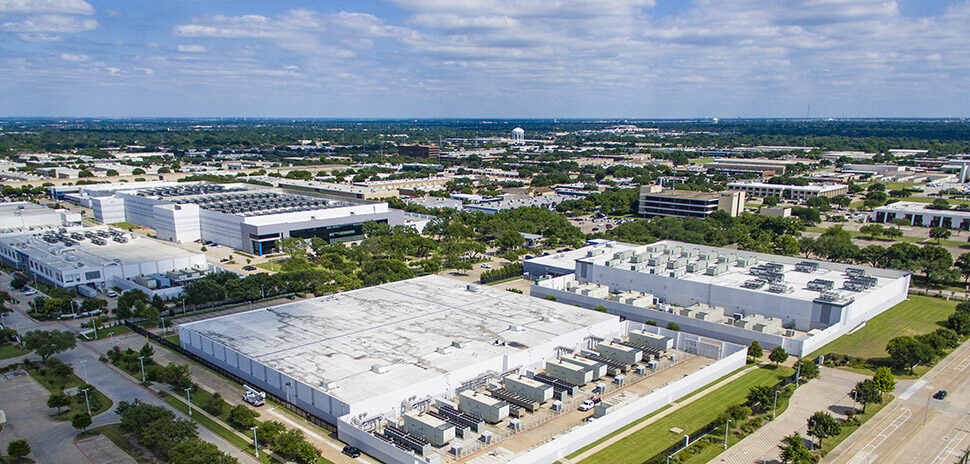Rare events, such as today’s pandemic, are moments in time when rediscovery creates innovation and new paradigms that produce quantum leaps into the future, said Dan Noble, President and CEO of HKS, Inc., an 81-year old Dallas-based architecture firm with 26 offices around the world, at a May 8 Tomorrow Fund Investors meeting.
“I think if you’re one of those that embraces change, it’s an opportunity in a way that will move the ball forward for society,” Noble said.
Mike Rosa, DRC Senior Vice President of Economic Development, moderated the discussion with Noble, which touched on topics ranging from the future of office design and designing for density to utilizing new technologies for health and safety in the workplace to thoughts on how sports and entertainment experiences may change.
Here are a few futuristic outlooks and key takeaways from Noble:
As people are finding it easy to work from home and are adapting to it, an immediate reaction may be to call for a reduction in real estate footprint. However, Noble said that may not necessarily be the case if designers think about safe ways to expand spaces.
“We might have more restrooms, larger areas in the lobby, more private areas in the workspace,” Noble said. “So, we may be going away from this shared collaborative workspace to people working from home two days a week. But when they come into work, it’s a completely different office space.”
Noble shared a look inside HKS’s client guide that provides high-level post-COVID-19 options for healthier and safer designs in the short-term and long-term future for three building categories: the core and shell, tenant improvements, and operations.
Explosions in Innovation Will Redefine a Workspace
Noble said innovations in smart phone and wearable apps could be used to access touchpoints from automatic sliding doors into tenant office suites to elevators, and provide keyless entry access for shared spaces or even in mailrooms for package locker systems. The more hands-free access design, the better, Noble shared. This may include motion detectors in ground lobbies that open doors for entry and exit, creating restroom doors that swing outward, and installing “toe pulls” or “arm pulls” for restrooms to remove the touchpoint of a door handle.
Inside the office, options to keep surfaces and spaces clean include footwear sanitizing products at entrances and in restrooms, phone cleaning UV stations such as phonesoap.com, self-cleaning films for touchpoints, and antimicrobial furniture such as copper chairs. Noble shared immediate design changes could include dividers between cubicles and offices, software that counts a room’s occupancy and keeps track of its last cleaning, and thermal scan check-in terminals for tenants upon entry.
People are Social Animals and Density is Desired
“We are in an opportunity here where we can have controlled density, not be afraid to be around people, and be smart as we create more density,” Noble said. “Density is not a bad thing. I think it is key to creating urban, sustainable communities. Through design, we can impact behavior to reinforce social distancing, mobility, and most importantly, access to green space.”
Technologies in cloud computing, artificial intelligence, and facial recognition can be utilized in dense areas to keep people safe, Noble said. Dallas’ density of 3,700 people per square mile pales in comparison to New York City’s 29,000 people per square mile, but design of developments should become places within downtowns.
“The social and urban fabric is going to be completely rethought—and it should be. We should not be thinking of buildings as one-off, isolated developments, but how they fit into the whole fabric of the downtown area or a denser area,” he said. “I enjoy personal liberties and freedoms that we have. But with 7.8 billion people on the planet and moving quickly to 10 billion, here in Dallas, we’re going to be 10 million soon—we’re going to be growing. We have to rely on technology to help navigate and keep us safe from a health perspective, not just from crime. If we can find a way to utilize technology and govern it, I think it will be good for us.”
The Future of Sports and Entertainment
HKS’ design and architecture roster for stadiums includes the Dallas Cowboys’ AT&T Stadium, the Texas Rangers’ Globe Life Park, the Minnesota Vikings’ U.S. Bank Stadium, the Indianapolis Colts’ Lucas Oil Stadium, and SoFi Stadium, set for completion in July 2020 for the Los Angeles Rams and Los Angeles Chargers.
Noble believes health research will bring new innovations that will help major sporting events return, such as a Super Bowl for 80,000 people.
“Crowd control through technology can be enhanced, and you’ll be seeing a little bit more of the virtual world in sports,” Noble said.
HKS is working with groups to design immersive sporting event technology for 2,000-people environments shaped around an elliptical cone of vision where an event is projected on a screen and attendees feel as though they are at a World Cup, for example.
“Two things that will happen in the design world,” Noble said. “One, is how you create virtual environments, and two, how you think through how these building types [convention centers, hotels] can be converted and repurposed to other uses for health, including surge hospitals.”
The Dallas Regional Chamber is a partner organization of Dallas Innovates. DI is a collaboration of D Magazine Partners and the Dallas Regional Chamber.
![]()
Get on the list.
Dallas Innovates, every day.
Sign up to keep your eye on what’s new and next in Dallas-Fort Worth, every day.

































